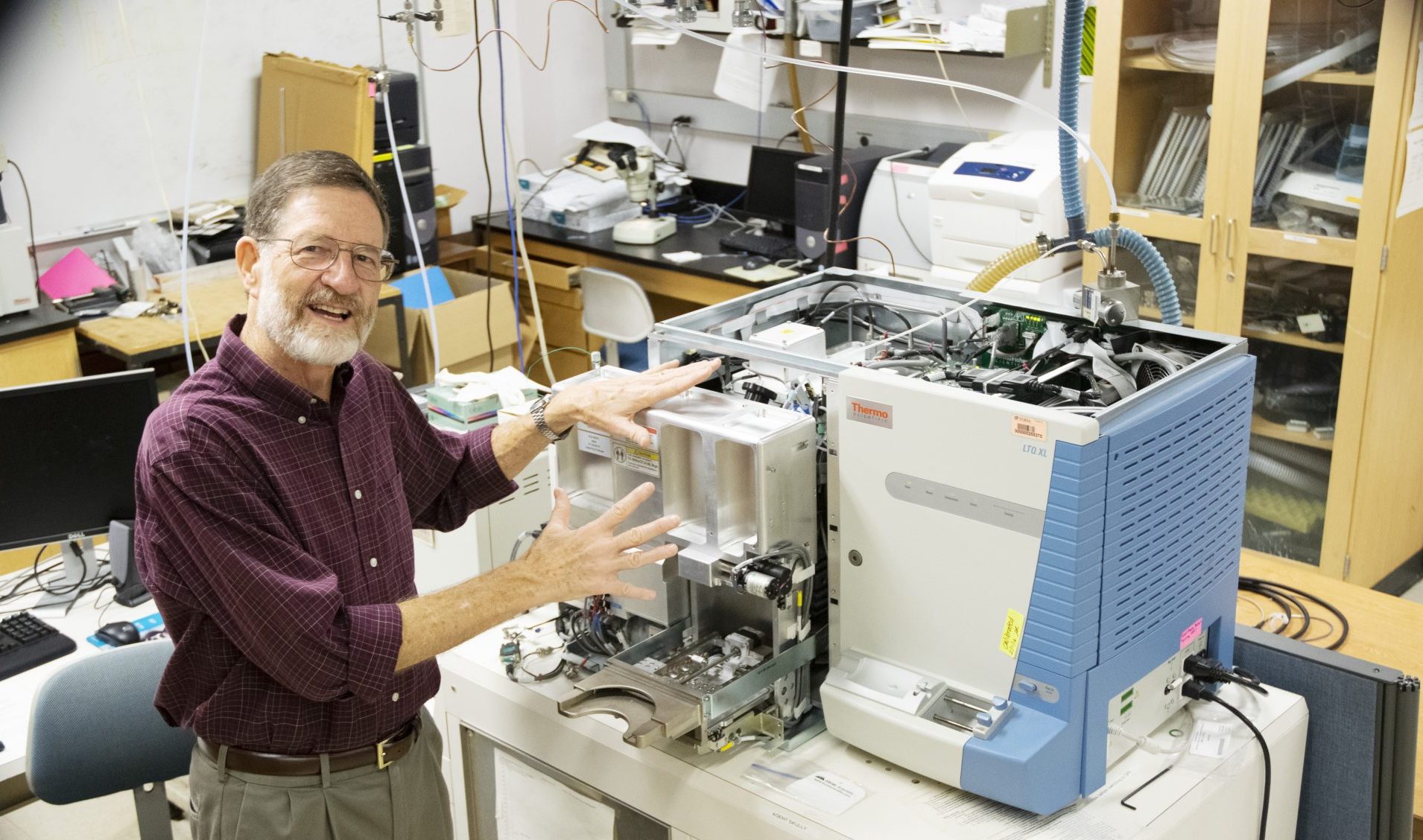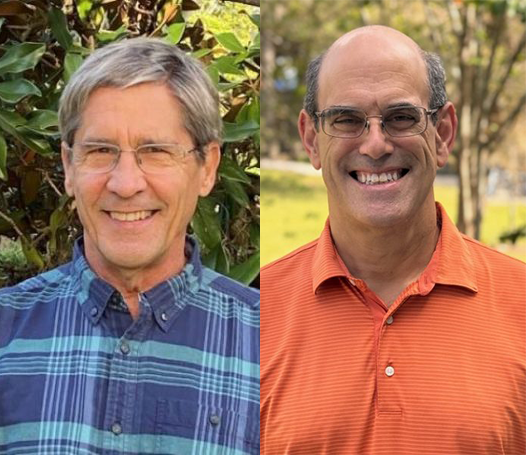
UF Professor Earns Hall of Fame Spot for Groundbreaking Invention
UF professor RICHARD YOST was inducted into the Florida Inventors Hall of Fame on September 20, 2019, for his outstanding achievements in mass spectrometry and analytical chemistry. Yost is head of the Analytical Division of the Department of Chemistry at UF as well as the director of the Southeast Center for Integrated Metabolomics.
Yost was recognized primarily for his most prominent invention: the triple quadrupole mass spectrometer.
By measuring the weight of molecules, the tool provides crucial information used in research settings, medical procedures and more. It has been employed in everything from environmental research to Olympic drug testing. Medical applications, including testing for diseases in newborns, have been instrumental in saving lives around the world.
A quadrupole itself consists of four metal poles arranged in a square. As the name suggests, the triple quadrupole mass spectrometer comprises three quadrupoles linked together. After voltages are applied, creating an electric field, ions move through the center of the arrangement toward the device. This is like a filter, allowing the parts of the molecule to be separated and analyzed.
The triple quadrupole mass spectrometer was officially invented in 1978, but work began several years prior. Yost, a graduate student at the time, worked with a professor at Michigan State University, Christie Enke, to create the device.
Yost’s primary goal when joining the project was to streamline processes that were previously done manually and required painstaking precision. “At this time, mass spectrometers were large, clunky instruments that were not computerized, and were typically not used for analytical chemistry,” he said. “But the quadrupole mass filter offered solutions to these problems.”
“It is a great honor to be recognized alongside these other great inventors. And it’s a remarkable opportunity for celebrating the tools that advance science.” — Richard Yost
After their proposal for the project was rejected by the National Science Foundation, Yost and Enke needed to find a new source of funding.
“Fortunately, the Office of Naval Research funded the grant,” Yost said, “and I bought a couple thousand pounds of stainless steel and electronics and started building. It’s become the world’s most common mass spectrometer. Not bad for an instrument that ‘wouldn’t work.’”
The instrument was promptly put on the market and is now sold around the world, with an annual yield of over $1 billion. In the decades since its invention, it has remained an important part of the research process in multiple fields.
Today, Yost is recognized as a world leader in analytical chemistry and a pioneer in the field of mass spectrometry. With 13 U.S. patents under his belt, Yost continues to push the boundaries for what is possible in the field of chemistry.
“It is a great honor to be recognized alongside these other great inventors,” Yost said, “And it’s a remarkable opportunity for celebrating the tools that advance science.”


